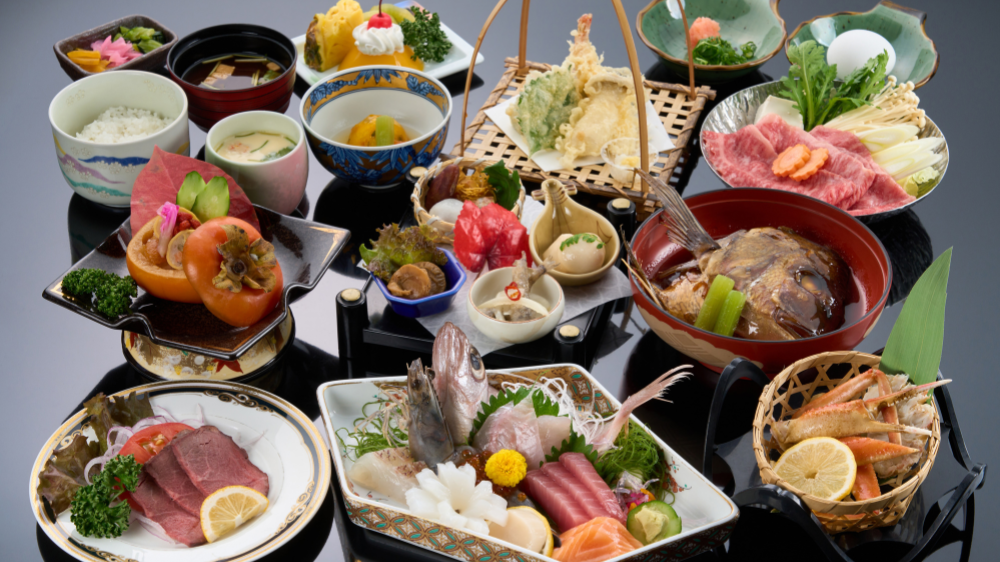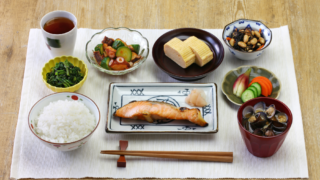What is Washoku?
 Japanese cuisine(Washoku)
Japanese cuisine(Washoku)Washoku, or Japanese cuisine, is a traditional food culture that emphasizes seasonal ingredients and the blessings of nature. It’s not just about cooking techniques, but also deeply connected to nature, culture, and spirituality through food.


Seasonal Ingredients

Japan is a country blessed with rich natural landscapes, including mountains and seas, allowing you to enjoy seasonal ingredients. For example, spring offers bamboo shoots and mountain vegetables, summer brings ayu (sweetfish) and cold noodles, autumn features matsutake mushrooms and pacific saury, and winter is perfect for hot pot dishes.
Ichiju Sansai (One Soup, Three Dishes)

The basic structure of a Washoku meal is “Ichiju Sansai,” which means one soup and three dishes. This includes rice, miso soup, one main dish, and two side dishes. This combination is nutritionally balanced and easy to incorporate into daily meals.
Fermented Foods
 Natto
NattoWashoku often includes unique Japanese fermented foods like soy sauce, miso, natto, and katsuobushi (dried bonito flakes). These foods are rich in flavor and are considered healthy.
Traditional Events and Washoku
 traditional Japanese New Year’s cuisine
traditional Japanese New Year’s cuisineWashoku is closely tied to Japanese traditional events. For example, New Year’s features osechi-ryori and ozoni, Hinamatsuri (Girls’ Day) has chirashizushi, and New Year’s Eve is celebrated with toshikoshi soba. These dishes are imbued with wishes for family health and happiness.
Influence from Abroad
Japanese Washoku culture has evolved by incorporating influences from China, Korea, and, more recently, the West. During the Meiji era, Western dishes like curry rice and hamburg steak were introduced and have since become part of Washoku.
Spirit of Omotenashi (Hospitality)
 the act of showing gratitude
the act of showing gratitudeWashoku embodies the spirit of “omotenashi,” which means hospitality. It’s about showing respect and gratitude through food. For instance, before eating, it’s customary to say “itadakimasu,” and after eating, “gochisousama,” expressing appreciation for the meal.
Washoku is a traditional Japanese food culture that includes everything from choosing ingredients, cooking methods, presentation, and even how you eat. Understanding these features allows you to enjoy the richness of Japanese food culture more deeply.
When you visit Japan, be sure to savor the local Washoku cuisine!




